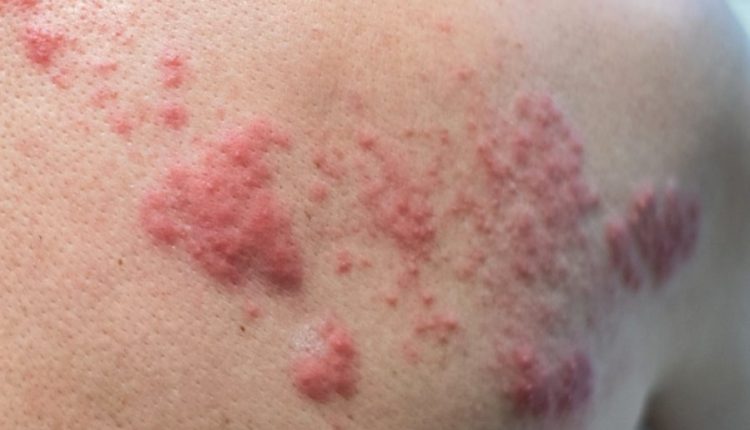
Shingles, the painful return of the chickenpox virus
Shingles, better known as shingles, can lead to serious complications, such as severe pain that is not responsive to conventional pain-relieving drugs and lasts for months
Antivirals are not entirely effective in preventing the onset of neuralgia.
Vaccines are, especially the latest one on the market, which is also suitable for the immunocompromised.
Herpes zoster, the scientific name for the disease, on the other hand, has nothing evocative about it other than the pain sometimes described as unbearable by those who have had to deal with the rash.
And they are not few.
There are an estimated 200,000 cases a year in Italy, with an incidence that increases with age, reaching 10 per thousand in the over-80s.
In order to prevent both the onset of shingles and the painful complication, for some years now medicine has had two safe vaccines with different efficacies and indications.
They are little known to the general public: since shingles is not a public health problem, they do not enjoy much ‘promotion’ and are therefore not recommended even to those who have a high probability of developing shingles.
What is shingles
Shingles (not to be confused with herpes simplex, which affects the mucous membranes of the mouth, nose and genitals) is the result of endogenous reactivation of the varicella-zoster virus (VVZ), which is at the origin of the paediatric infectious disease.
Following the first infection, VVZ remains in a latent form in the nerve ganglia, manifesting itself in the form of a rash following, for example, an immune deficiency.
Who gets shingles?
Age is a predisposing factor, because with advancing years, the antibody response, i.e. the memory of exposure to viral or bacterial antigens acquired in youth, fails.
But stress, an immunodepressive disease or excessive exposure to the sun can also be the cause of ‘St Anthony’s Fire’.
How it manifests itself
Shingles appears as an erythematous patch on the abdomen or trunk, more rarely on the arms or face.
The significant redness is accompanied by small white blisters that can become over-infected and last 4-7 days, then dry up and disappear, leaving an area of dyschromia, i.e. a change in skin colour.
The visual manifestation is accompanied by painful and annoying symptoms, often itching.
Complications of shingles
The rash itself is not a problem and is self-limiting even without specific therapy.
The real problem with shingles is the complications.
If it affects the ocular nerve, it can cause keratin damage and even loss of vision.
If it affects the auditory nerve, it can lead to painful rashes on the external auditory canal, the tympanic membrane, associated with peripheral paralysis of the facial nerve, as well as disturbances in balance (Ramsay Hunt syndrome).
But the most frequent complication is chronic pain, which can appear even some time after the onset of shingles, lasting for months.
Unbearable pain
This is postherpetic neuralgia caused by inflammation of the peripheral nerves due to the virus.
The pain attacks are sometimes so intense that they severely impair quality of life and are hardly responsive to conventional painkillers such as tachipirin or aspirin.
Corticosteroids are often used, as well as tricyclic antidepressants or anticonvulsants.
Antiviral therapy after a shingles diagnosis
How do you intervene once ‘shingles’ has been diagnosed?
There are antiviral drugs (such as acyclovir or valacyclovir) that must be administered within 72 hours of onset for a duration of 7 days.
However, even if the dosage is strictly adhered to, as it must be, drug therapy reduces the skin symptoms, but does not necessarily prevent the neuropathic complication. This is why the vaccine exists.
Vaccines
There are currently two types of vaccine on the market: Zostavax and Shingrix.
They are not to be confused with the chickenpox vaccine, which is administered at 1 year of age.
Although this prevents the viral disease, it also prevents shingles.
Zostavax was first used in 2006, and in Italy it is offered free of charge as provided for by the Livelli Essenziali di Assistenza (Essential Levels of Care) to people aged 65 years and over, and to people over 50 years old suffering from diabetes mellitus, cardiovascular disease and COPD, or who are candidates for treatment with immunosuppressive therapy (e.g. anti-cancer), factors that increase the risk of developing HZ or aggravate its symptoms.
Zostavax has suboptimal efficacy (50%) in preventing herpes outbreaks, but good efficacy in preventing neuropathic complications (66%).
However, it does have one limitation: as it is a live attenuated virus vaccine, it cannot be administered to immunocompromised people who, paradoxically, are most at risk.
A limitation overcome by Shingrix, which has been available in Italy for about a year – but was approved by the US Food and Drug Administration (FDA) in 2017 and by the European Medicines Agency (EMA) in 2018 -.
It is composed of an antigen, glycoprotein E (gE), a structural component of varicella zoster virus (VZV).
While one administration was sufficient for Zostavax, Shingrix requires two administrations 2-6 months apart.
In the authorisation studies, this vaccine proved to be much more effective than the other: in preventing shingles (90%) and neuropathic complications (100%).
It is currently available free of charge in Italy in some regions only to indicated patients (immnodepressed).
Read Also:
First Case Of Meningitis Associated With SARS-CoV-2. A Case Report From Japan



